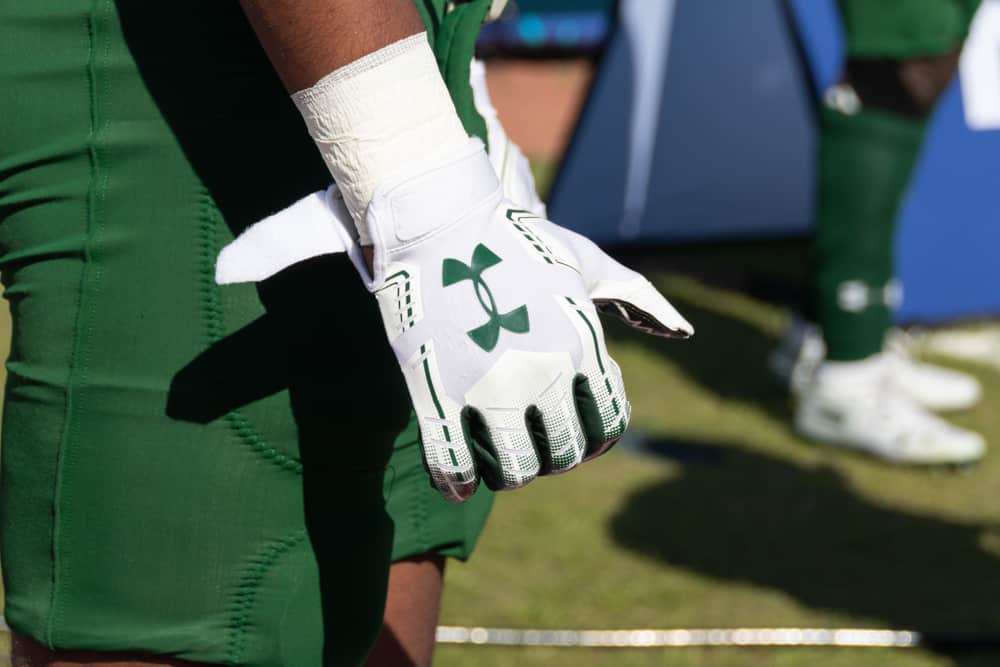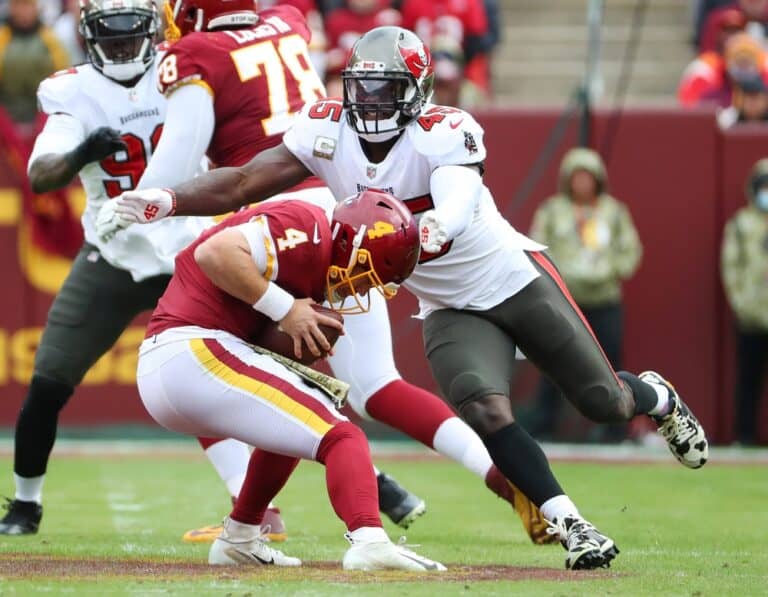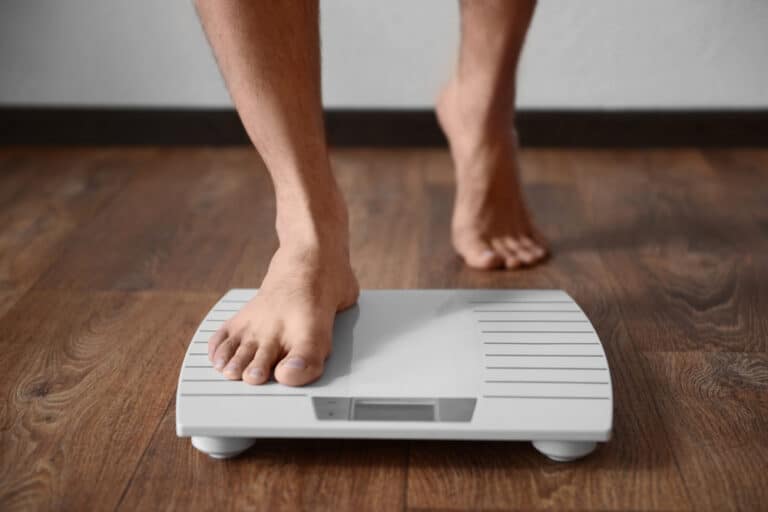Why Do NFL Players Wear Gloves? (Here’s The Truth)
Editorial credit: YES Market Media / Shutterstock.com
If you follow the NFL, then you already know how competitive the sport can be. I was watching a match lately and noticed that nearly 80 percent of the players wear gloves. It made me wonder, “Why do NFL players wear gloves?”
National Football League(NFL) players wear gloves because the gloves give them a better grip, gloves protect their hands from the elements, prevent injuries to their hands, and sometimes make a fashion statement. Gloves give players superior grip, and in doing so, there are fewer handling errors.
Glove manufacturers spend a lot of time making gloves for professional football players. Different gloves are used to suit the position that the footballer plays on the field. There are many reasons NFL players wear gloves, so if you want to learn more about why they wear gloves, keep reading.
Why Do NFL Players Wear Gloves?
Gloves for football have been around since the 1980s but only gained popularity in the late 90,s. Since players in the NFL started to wear gloves in 1999, there have been fewer handling errors, making one-handed catches possible.
Although better grip on the ball is not the only reason why NFL players wear gloves, it is a critical reason. The main reasons why NFL players wear gloves are:
- Gloves give superior grip to the ball when NFL players practice or play matches.
- Gloves protect the hands of an NFL player from the effects of nature.
- Gloves protect the hands of an NFL player from a range of injuries.
- Some NFL players wear gloves as part of a fashion statement.
We will discuss the reasons NFL players use gloves under their own headings. The use of gloves in the NFL has evolved a lot since the 1980s, seeing as the players used gloves at this time only against cold weather.
NFL Players Wear Gloves For Superior Grip
Gloves are a common sight on the football fields of the NFL and are used by defensive backs, running backs, linebackers, and wide receivers. The gloves give the NFL players superior grip on the ball even in unfavorable conditions, like extreme heat or cold or wet weather.
In the past, a substance called Stickum was used by players to give their hands a better grip on the ball, but the substance was banned from the NFL in 1981, and the use of gloves started to gain traction after this ruling came into effect.
NFL Players Wear Gloves Against The Effects Of Nature
The second reason why players in the NFL wear gloves is that the gloves protect their hands from the effects of nature. In hot conditions, sweat can become a real problem when it comes to handling the ball because the ball becomes slippery in sweaty hands.
The same goes for wet conditions, hence the need for gloves. Cold conditions cause a loss of feeling in the hands of the NFL players resulting in more handling errors. The gloves that footballers wore against cold in the past were a little too effective because they caused the player’s hands to sweat inside the gloves.
Fortunately, the gloves that are currently used in the NFL have been adapted to suit the needs of professional players. The manufacturers of gloves did a lot of fieldwork to refine and perfect the gloves that are used in the NFL today.
NFL Players Wear Gloves Against Hand Injuries
NFL players need to guard their bodies against injuries, and gloves help protect their hands against injuries (some of which are serious), including abrasions, scrapes, and cuts. The gloves can also help prevent possible injuries when a player gets snagged by another player.
Professional football players get snagged with each other regularly because of the brutal contact that is needed in this sport. The hands of NFL players are vital in having a long and successful career in the professional leagues.
Although injuries to other parts of the body might have more severe effects on an NFL player’s body, a few players have ended up with mangled fingers. Finger and hand injuries are not a big deal in football circles, but they can still have a long-term effect on a player.
Some of the players that ended up with mangled fingers are:
- Booger McFarlane was a defensive lineman.
- Chuck Bednarik was an offensive lineman.
- Randy Gradishar was a linebacker.
- Rashad Johnson was a defensive back.
- Ronnie Lott was a defensive back.
- Michael Strahan was a defensive end.
- Brian Baldinger was a offensive lineman.
- Jim Harbaugh, who was a quarterback.
- Jameis Winston, who was a quarterback.
- Anthony Munoz, who played Offensive tackle in the NFL.
Gloves can not prevent all hand injuries but are definitely helpful in preventing smaller injuries from occurring in the NFL.
Sometimes NFL Players Wear Gloves As A Fashion Statement
The players’ gloves that are used in the NFL are sometimes used to show off their fashion sense and boost confidence. Bright-colored gloves are also popular among teams, like the yellow gloves that caused so much controversy in 2020 during the Superbowl.
Who can forget the American flag gloves that wide receiver Jakeem Grant sported? Team gloves were also displayed by the NFL and Nike 2012, who designed the gloves. The gloves look very ordinary until a player holds their hands together. The team logo can be seen when a player places his hands next to the other.
Designing and manufacturing gloves for the NFL have become extremely competitive between companies like Nike, Under Armour, Reebok, Adidas, and Cutters. When NFL players show their fashion sense and style through gloves, it can mean increased sales of gloves used in football, in turn creating a market for custom gloves.

Conclusion
The NFL has made many changes over the years, and it was interesting to share research on why NFL players wear gloves. The reasons are to give the players a better grip, to protect hands against small injuries, to guard a player’s hands against the elements, and to make a fashion statement. Writing about this topic was so much fun, and I hope you enjoyed reading this post.







